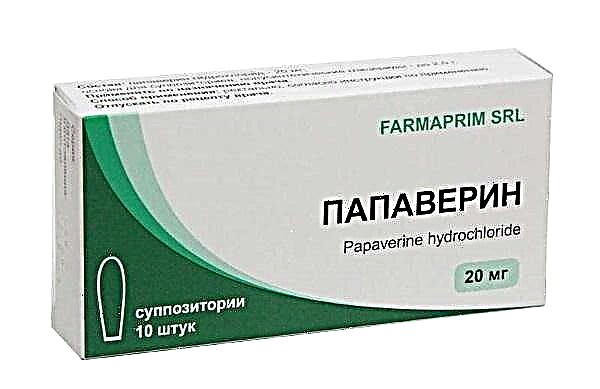What is croup?
Croup (translated from English - "croak") is an inflammation of the larynx mucosa, which is accompanied by hoarseness or hoarseness of the voice, barking, croaking cough and difficulty breathing. Acute laryngotracheitis most often affects children under seven years of age, and boys get sick 2 - 3 times more often than girls.
The reasons for the development of laryngitis
- Viruses are the main cause of disease. The first place among them is taken by parainfluenza, followed by the rhinosynthetic virus, adenovirus, and influenza and measles viruses.
- Bacteria are rare, but can still cause disease. In the early twentieth century, the most common cause of the development of croup was the diphtheria bacillus. Under its influence, tissue inflammation developed, fibrinous (white, filmy) plaques appeared, which closed the child's airways (true croup) and suffocation occurred. Fortunately, this serious disease was overcome, and now it is already extremely rare. The protection of humanity from it is the vaccination against diphtheria, which is carried out to all children according to a certain plan. Today, the cause of the development of croup is most often Haemophilus influenzae, but streptococcus can also be.
- The cause of the development of cereals may be the effect of an allergen on the body.
As a result, allergic inflammation develops, accompanied by edema and stenosis.
 Let's consider the mechanism of development of obstruction (airway closure) in laryngitis.
Let's consider the mechanism of development of obstruction (airway closure) in laryngitis.
Under the influence of various causes, changes occur that lead to inflammation and swelling of the laryngeal mucosa, resulting in stenosis (narrowing) of the child's airways, and it becomes difficult for him to breathe. Considering the fact that in children the larynx consists of soft and pliable cartilage, its tissues are very loose, and the mucous membrane is rich in blood vessels, it becomes clear that edema develops quickly enough. This is a feature of childhood. Moreover, 1 millimeter of mucosal edema leads to a narrowing of the lumen by 50 - 70% and there is a danger of suffocation.
Factors Predisposing to the Development of Croup
- Age up to seven years.
- Allergic diseases (rhinitis, dermatitis) and a tendency to allergies.
- Iron-deficiency anemia.
- Polluted air, including secondhand smoke.
How does laryngitis manifest?
Very often, laryngitis develops against the background of a cold, but it also happens the other way around, when suddenly, against the background of complete health, a child develops laryngitis with stenosis, and only later the temperature rises, begins to flow from the nose, and other signs of SARS appear.
 Usually, stenosis with laryngitis occurs acutely, simultaneously with the onset of a viral infection, or a few hours after the onset of the disease, but there may be a gradual increase in stenosis within 2 to 5 days.
Usually, stenosis with laryngitis occurs acutely, simultaneously with the onset of a viral infection, or a few hours after the onset of the disease, but there may be a gradual increase in stenosis within 2 to 5 days.
No matter how acute laryngitis develops, its main manifestations are always the same.
3 main signs of laryngitis
- Hoarse, hoarse voice.
- Violent barking cough. At the very beginning of the disease, the cough is dry, exhausting, then turns into a wet one. Having heard such a cough once, you will never confuse it with anything again. Cough is not called barking for nothing. It really looks a lot like a dog barking.
- Shortness of breath, or difficulty breathing, mainly at the moment of inhalation, which occurs as a result of stenosis and manifests itself in attacks of suffocation.
Stenosis development
There are 4 degrees of development of stenosis in acute laryngotracheitis:
- Grade 1 - compensated stenosis... Hoarseness, hoarseness of the voice can progress to aphonia (complete loss of voice). First, there is a dry, obsessive, persistent cough, and then a wet barking, croaking. When the child is calm, there is no difficulty in breathing. During crying, coughing, anxiety, sucking from a bottle, shortness of breath appears (it is difficult for the baby to breathe in) and stridor (noisy hissing, wheezing), which parents hear from a distance. Difficulty breathing can last from 20 minutes to 2 to 3 hours. If you start treatment at this stage, the stenosis quickly resolves. It can pass on its own when the child calms down, or it can move to the next stage of development;
- 2nd degree - incomplete compensationThe general condition of the child is deteriorating. The voice is very hoarse, more often it is not at all. The kid is restless, breathing is noisy, whistling, at a distance you can hear how he breathes, it is difficult for him to breathe. The auxiliary muscles are involved in the process of breathing. You will notice that the wings of the nose are inflated, and if you undress the child, you will see how the intercostal spaces, pits above the collarbones, sink during breathing. With exertion, crying, increased coughing, shortness of breath increases sharply and can persist for up to several hours. At this time, the baby's heart rate increases, sweating appears and blood pressure rises;
- Grade 3 - decompensated stenosis. The child's condition is grave. When breathing, both inhalation and exhalation are difficult. The kid is very worried, then calms down, becomes lethargic, inhibited. His skin is pale, covered with cold sweat, there may be cyanosis around the mouth. The breathing of the baby is weakened, superficial, with a noisy sibilant inhalation and exhalation. The auxiliary muscles are involved in breathing. The head is thrown back. During periods of anxiety, the child may turn blue. The pressure at this stage of the stenosis decreases;
- 4 degree - asphyxial... At this stage, the child's condition is extremely difficult. The skin is pale cyanotic in color, and the cyanosis periodically increases. Breathing is intermittent, the baby's heartbeat is hardened, the pressure decreases. If you do not immediately help, breathing will stop and he will die.
Signs of allergic laryngeal edema
Edema or stenosis may be caused by allergies.
Features of this type of laryngitis:
- Acute development of stenosis (within a few hours).
- Most often occurs at night against the background of complete health.
- There are no manifestations of colds.
- The voice is hoarse.
- Breathing is difficult, but the whistling noise on inspiration is weak.
- Dry barking cough. There is no wet cough with allergic edema.
- The child has skin or other signs of allergies.
Allergic edema often develops in children under three years of age who have previously had allergy manifestations.
Complications of laryngitis
A formidable complication of laryngitis is the development of stenosis, as a result of which the flow of air into the respiratory tract is disrupted. Typically, this condition develops in the evening or at night. A child with signs of a cold goes to bed calmly, and at night he wakes up from the fact that he has difficulty breathing and does not have enough air. Stenosis or narrowing develops gradually, the more the stenosis and narrower the airways, the worse the baby's condition.
The development of stenosis is life-threatening for the child. Therefore, at the first signs of laryngitis, parents should immediately consult a doctor or call a doctor at home to provide timely assistance and prevent this complication.
How can a child with laryngitis develop stenosis at home?
As soon as the first signs of stenosis appear, parents need to immediately call an ambulance or take the child to the hospital.
Before the ambulance arrives, you need to perform a number of actions:
- Try to calm the child down, put him on his knees in a half-sitting position. The more restless the baby is, the more shortness of breath manifests itself. You can provide fresh air by opening a window and ventilating the room.
- The air in the room must be humid. You can humidify the air in the room by turning on the humidifier. If not, you can use wet towels by hanging them in the room and on a hot radiator.
- Rub the baby's legs and calves. This is a distracting procedure that allows blood to flow from the throat to the legs, thus relieving the condition.
- Give the child an inhalation with mineral water, saline. If there is no effect, inhale with Pulmicort. If you don't have an inhaler on hand, just turn on the hot water tap in the bathroom and let your little one breathe the steam.
- Give the child an anti-allergic agent (Suprastin, Zodak, Fenistil).
Treatment of acute stenosing laryngotracheitis
 If the doctor offers you treatment in a hospital, then you should not refuse, even if the child is feeling better. Stenosis may recur. In the hospital, the baby will be under round-the-clock supervision until complete recovery.
If the doctor offers you treatment in a hospital, then you should not refuse, even if the child is feeling better. Stenosis may recur. In the hospital, the baby will be under round-the-clock supervision until complete recovery.
Children with acute stenosis of the larynx, children under the age of six months living at a great distance from home to the children's department and those babies who have already had laryngeal stenosis in the past are subject to compulsory hospitalization.
The first two degrees of stenosis are treated conservatively with medication. In the third and fourth stages, surgery may be required.
The treatment plan includes a number of actions:
- Plentiful warm drink (milk mixed with mineral water, fruit drinks, green tea). It is recommended to give warm drink fractionally, as often as possible in small portions. Advice! You should not give the child juice to drink, it can irritate the mucous membranes and increase the swelling.
- Antiviral or antibacterial drugs, depending on the cause of the disease.
- Alkaline inhalation, if necessary inhalation with glucocorticoids (Pulmicort).
- Antihistamines for signs of allergies.
- Hormonal drugs intramuscularly or intravenously (prednisolone, dexamethasone). They have an anti-inflammatory effect and reduce swelling.
 In case of ineffectiveness of treatment, as well as in case of stenosis of 3 and 4 degrees, the child is intubated the trachea (a hollow tube is inserted through the mouth, which does not allow the airway to close and ensures the passage of air into the lungs) and restore breathing. The tube is placed for 1 - 3 days and removed after the edema subsides and spontaneous breathing is restored.
In case of ineffectiveness of treatment, as well as in case of stenosis of 3 and 4 degrees, the child is intubated the trachea (a hollow tube is inserted through the mouth, which does not allow the airway to close and ensures the passage of air into the lungs) and restore breathing. The tube is placed for 1 - 3 days and removed after the edema subsides and spontaneous breathing is restored.
Acute laryngotracheitis with stenosis, which occurs once, tends to recur again. Therefore, parents of a baby who had laryngitis are advised to purchase an inhaler, it should always be at hand during the child's illness. Alkaline inhalation and inhalation with glucocorticoids significantly facilitate breathing, stop and reduce edema.
Another reason for the barking cough
A barking cough is a hallmark of another infection - whooping cough. This infection is characteristic mainly of childhood. Unfortunately, children die of whooping cough every year. It is especially difficult in young children. Therefore, it is useful for parents to know how the disease manifests itself and what to do in order not to get sick.
Whooping cough cause
Whooping cough is caused by bacteria. Infection occurs through contact with a sick person, who releases bacteria into the external environment when talking, coughing and sneezing.
Whooping cough symptoms
There are three periods of whooping cough:
- Prodrom... In this period, the picture of the disease is similar to the common cold. The child shows signs of a viral disease - the temperature rises, the state of health worsens, weakness occurs, the muscles and head ache, lays and runs from the nose. This period lasts 7 to 10 days.
- A period of convulsive or spastic cough... During this period, attacks of dry barking cough occur in the child. A paroxysmal cough is the main symptom of all the symptoms of the disease. The cough occurs due to the excitation of the respiratory center due to the effect on it of toxins that the pertussis bacteria secretes, so it is unproductive (phlegm does not go away). Coughing fits can be repeated several times during the day.
- Convalescence period... The child's condition is getting better, coughing attacks occur less often. A single cough lasts for two weeks. Full recovery occurs in a month.
Features of a whooping cough attack:
- the child is short of breath before the seizure begins. Older children may complain about this when they feel an attack is coming;
- reprises are characteristic. It's a long, wheezing breath. After a long cough, the child breathes in air with a whistle;
- barking cough on exhalation;
- after an attack, thick mucus leaves, there may be streaks of blood, if there is damage to the mucous membrane.
During attacks, at the height of the cough, there may be vomiting. Due to the tension when coughing, the child has a puffy face, hemorrhages may appear on the sclera. The attacks usually get worse in the evening. The provoking factors can be pain, physical activity, taking pills or food.
 The attacks subside when fresh air is supplied. With severe attacks of coughing, a spasm occurs, leading to oxygen starvation of the tissues of the brain and heart. This period lasts 15 to 25 days.
The attacks subside when fresh air is supplied. With severe attacks of coughing, a spasm occurs, leading to oxygen starvation of the tissues of the brain and heart. This period lasts 15 to 25 days.
During the recovery period, protect your child from repeated infections, worries and stressful situations. This is an important condition as they can trigger new coughing fits.
General rules for the treatment of whooping cough in children
- Isolate the child. It is very important. The disease is contagious, and healthy children, especially up to three months of age, can catch the infection from the sick.
- Ventilate and wet the room daily. Humidify the air.
- Eliminate physical and emotional stress. Short walks twice a day are helpful.
- It is better to exclude solid and sour foods from the child's menu so as not to provoke vomiting.
- Penicillin antibiotics (Augmentin, Amoxiclav).
- Antitussive drugs (Sinekod).
- Antiallergic drugs (Tavegil, Suprastin).
- Oxygen inhalation.
Prevention
 Vaccination is the main method for preventing whooping cough. Vaccination is the protection of the child from the severe course of the disease and the development of complications. Vaccinations are carried out in the clinic according to a specific plan, starting from the age of three months.
Vaccination is the main method for preventing whooping cough. Vaccination is the protection of the child from the severe course of the disease and the development of complications. Vaccinations are carried out in the clinic according to a specific plan, starting from the age of three months.
Conclusion
A barking cough is a hallmark of two fairly serious childhood infections. How these infections manifest themselves, every parent should know in order to seek help from a doctor in a timely manner and avoid the development of complications.



